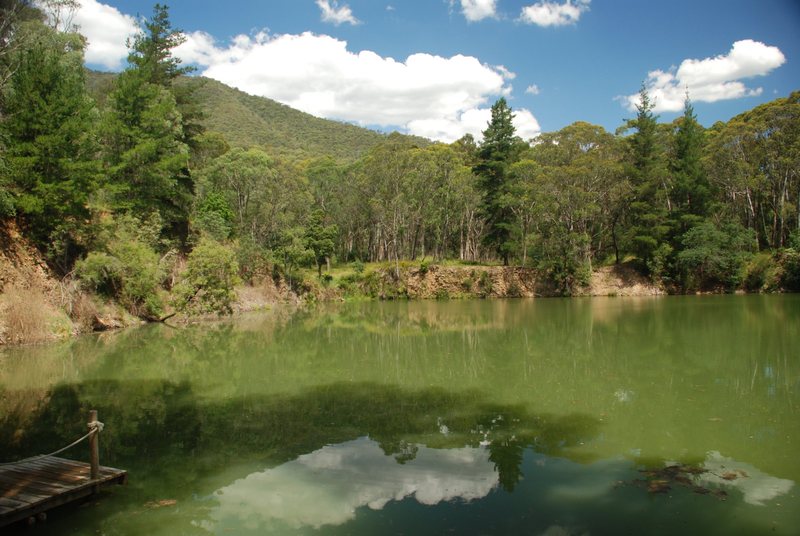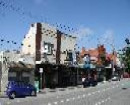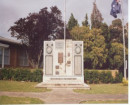TRONOH GOLD DREDGING PONDS
DREDGE HOLE LANE AND FEATHERTOP TRACK HARRIETVILLE, ALPINE SHIRE
-
Add to tour
You must log in to do that.
-
Share
-
Shortlist place
You must log in to do that.
- Download report



Statement of Significance
What is significant?
The Tronoh bucket dredge was the biggest in the southern hemisphere: it measured 167 metres long, weighed 4,813 tonnes, and could dredge to a depth of approximately 41 metres. The dredge was built by Thompsons of Castlemaine, and an electricity line to power the plant was installed from Bright. Construction costs totalled £380,000. The Tronoh dredge commenced operations in 1942 and ceased work in 1954. The Tronoh leases extended southwards for a distance of 7 km from a point halfway between Stoney and Smoko creeks. The total gold production of the Tronoh dredge at Harrietville was 54,000 oz. (The highest producing dredge in the State was the Victoria Gold Dredging Co NL Strangway's dredge, which produced 115,941 ounces of gold between 1938 to 1948.) In 1955, the Tronoh dredge was sold and shipped to Malaya.
How is it significant?
The Tronoh Gold Dredging Ponds are of historical and scientific significance to the State of Victoria.
Why is it significant?
The Tronoh Gold Dredging Pondare historically and scientifically as a characteristic example of an important form of gold mining. Gold mining sites are of crucial importance for the pivotal role they have played since 1851 in the development of Victoria. As well as being a significant producer of Victoria's nineteenth century wealth, gold mining, with its intensive use of machinery played an important role in the development of the State's manufacturing industry. The Tronoh Gold Dredging Ponds are a striking visual monument to the largest bucket dredge built in Australia with the southern-most pond reflecting the vessel's enormous dimensions.
-
-
TRONOH GOLD DREDGING PONDS - Permit Exemptions
General Exemptions:General exemptions apply to all places and objects included in the Victorian Heritage Register (VHR). General exemptions have been designed to allow everyday activities, maintenance and changes to your property, which don’t harm its cultural heritage significance, to proceed without the need to obtain approvals under the Heritage Act 2017.Places of worship: In some circumstances, you can alter a place of worship to accommodate religious practices without a permit, but you must notify the Executive Director of Heritage Victoria before you start the works or activities at least 20 business days before the works or activities are to commence.Subdivision/consolidation: Permit exemptions exist for some subdivisions and consolidations. If the subdivision or consolidation is in accordance with a planning permit granted under Part 4 of the Planning and Environment Act 1987 and the application for the planning permit was referred to the Executive Director of Heritage Victoria as a determining referral authority, a permit is not required.Specific exemptions may also apply to your registered place or object. If applicable, these are listed below. Specific exemptions are tailored to the conservation and management needs of an individual registered place or object and set out works and activities that are exempt from the requirements of a permit. Specific exemptions prevail if they conflict with general exemptions. Find out more about heritage permit exemptions here.Specific Exemptions:EXEMPTIONS FROM PERMITS:
(Classes of works or activities which may be undertaken without a permit under
Part 4 of the Heritage Act 1995)
No permits are required for the following classes of works provided they are
carried out in accordance with the provisions of the Conservation Plan For
Harrietville Dredge Hole Area, prepared by Robert J Kaufman, August 1995
-
-
-
-
-
TRONOH DREDGE HOLES: TURNING SCARS
 Victorian Heritage Inventory
Victorian Heritage Inventory -
TRONOH DREDGE HOLES: SOUTH HOLE
 Victorian Heritage Inventory
Victorian Heritage Inventory -
HARRIETVILLE CHINESE CAMP SITE
 Victorian Heritage Inventory
Victorian Heritage Inventory
-
1 Jackson Street
 Yarra City
Yarra City -
1 Lightfoot Street
 Yarra City
Yarra City -
1 Longfield Street
 Yarra City
Yarra City
-
-









